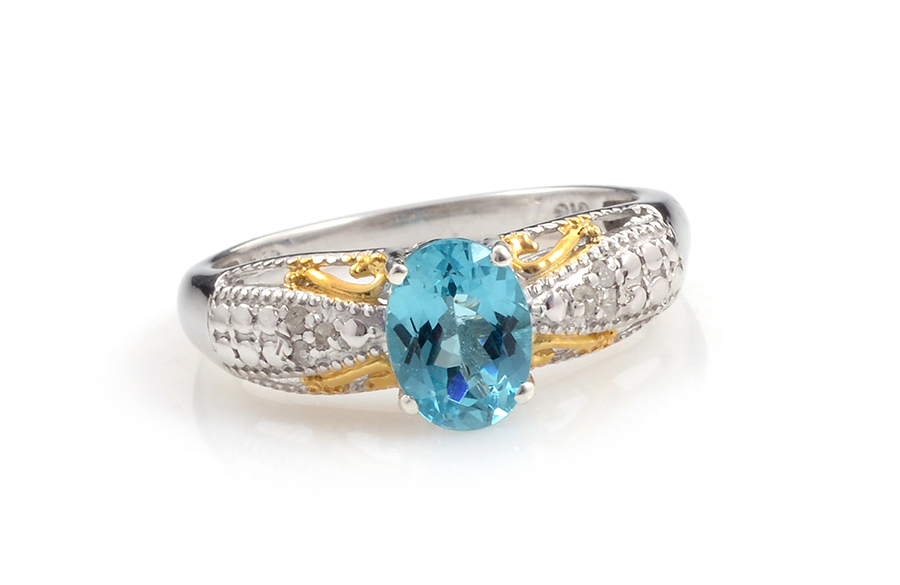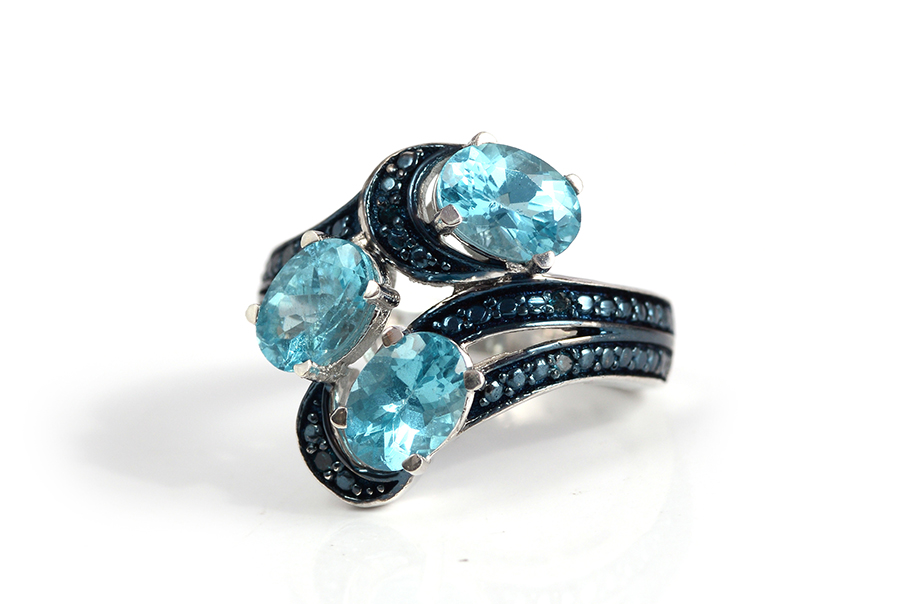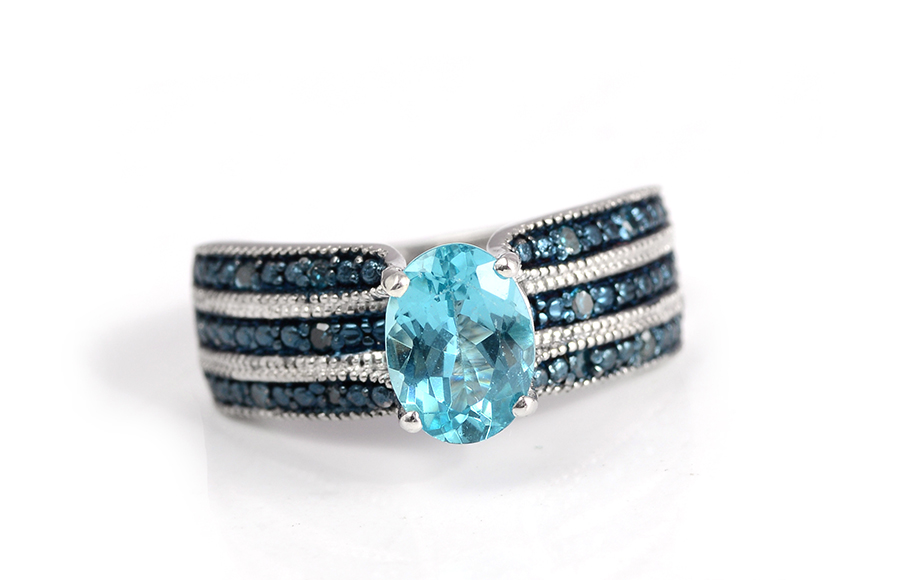Apatite: Madagascar
The name apatite is taken from the Greek word "apatao" meaning to deceive or mislead. That's because this sneaky gem is frequently mistaken for other pricey gemstones like tourmaline, peridot and beryl.
Apatite is a phosphorus-based gem that appears in virtually every shade of the spectrum, including yellow, green, pink, red, blue, violet, colorless, and cat’s eye varieties. The predominant shade is a blue-green teal hue similar to tourmaline. Apatite is used as a defining mineral for items ranked 5 on the Mohs hardness scale. It is the only gemstone mineral that naturally occurs in the human body. It is a major component in tooth enamel and makes up 70 percent of our bones.
- Ranks 5 on the Mohs hardness scale.
- Colors available in the full spectrum of hues, but preferred is a dark cyan green-blue.
- Member of the apatite family.
- Also known as asparagus stone, augustitie, asparagolite, phosphate of lime, chlorapatite, fluorapatite, and hydroxylapatite.
- Certain varieties of apatite, like Paraiba and Cerulean, have heat applied to enhance their color. Natural green and Malgache neon apatite are both 100 percent natural gems with no chemical or physical alterations.
LOCATION: Madagascar
Southern Madagascar apatite deposits, discovered in the 1980s, are already nearing exhaustion. We were right on the forefront when this gem debuted in the market. Our extensive collection of premium apatite was bought before the apatite boom, allowing us to share this rare gem at reasonable prices.

- Ranks 5 on the Mohs hardness scale.
- Colors available in the full spectrum of hues, but preferred is a dark cyan green-blue.
- Member of the apatite family.
- Also known as asparagus stone, augustitie, asparagolite, phosphate of lime, chlorapatite, fluorapatite, and hydroxylapatite. Heat applied to enhance color.





